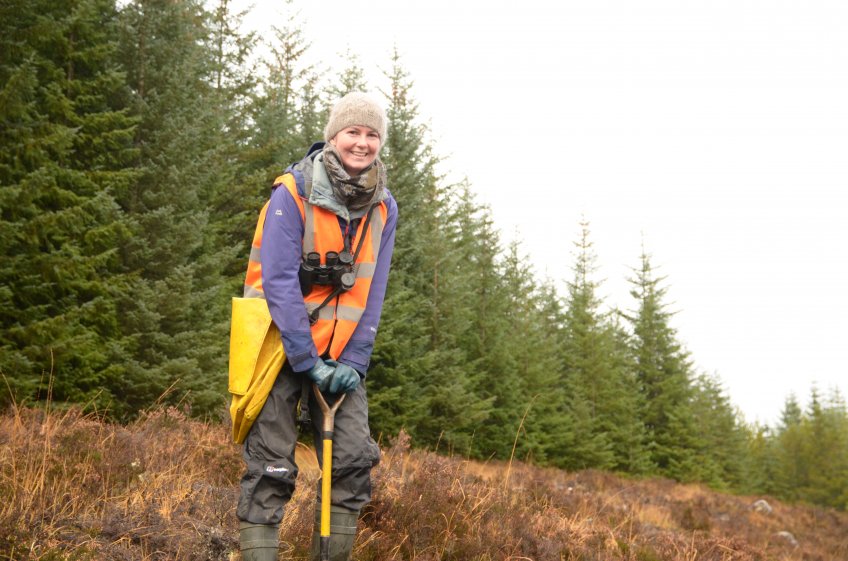Shinrin-yoku and slowing down in the forest
As a Trees for Life Conservation Week Leader, Heather Beaton makes sure every single volunteer gets the most out of their Conservation Work as possible. She shares her thoughts on encouraging volunteers to slow down in the forest in our latest guest blog.
 As a species we seem to be losing touch with the world that surrounds us. We’ve displaced nature and restrict our outdoor hobbies to achievements. We climb mountains and scale peaks. Run races and hurtle downhill on bikes, skis, snowboards. We’re becoming faster and faster and pushing ourselves further and further, but during this do we not start to find that we’re leaving something behind?
As a species we seem to be losing touch with the world that surrounds us. We’ve displaced nature and restrict our outdoor hobbies to achievements. We climb mountains and scale peaks. Run races and hurtle downhill on bikes, skis, snowboards. We’re becoming faster and faster and pushing ourselves further and further, but during this do we not start to find that we’re leaving something behind?
We Conservation Week Leaders want to encourage people to slow down. The activities we’re doing feed into a 250 year plan of forest restoration and we don’t need it all to happen today. To be in nature for a whole day can make these conservation weeks very special, for we’re not just present in nature; we’re part of it.
I was recently introduced me to the concept of Shinrin-yoku, otherwise known as forest bathing, by a friend of mine. She introduced it as a Japanese technique which encourages participants to slow down in woodlands and forests in order to allow the calm and the exhalations of the trees to permeate your body. It’s been practiced since the 1980’s and there’s science to back it up: slow walking in woodlands can increase your immune system’s ability to heal, can reduce blood pressure, reduce stress and can improve the mood. John Muir summed it up quite nicely (long before Shinrin-yoku was even a thing):
“Thousands of tired, nerve-shaken, over-civilised people are beginning to find out that going to the mountains is going home. Wilderness is a necessity.”
Hearing of Shinrin-yoku reminded me of walking with another friend in woodland near Inverness. We walked slowly, as that is my way, and I pointed out trees and birds, and other interesting things both big and small as we walked. While walking up a slight incline we found several moments to treasure: a small copse of birches, an almost perfectly spherical rowan that was filling a space in the plantation, a yellowhammer singing nearby.
This friend told me that he knew of that slope only as ‘calf-burn’ as that would normally be all he’d be feeling as he ran up the hill. It astounded him how much there was to see, and it was only later that I came up with a reason: moving quickly in nature is fine, but it doesn’t allow us to actually participate with the landscape we’re in. Move fast and the landscape becomes a flash of green, gold and grey but slowing down allows the forest to come to life around you, and that’s when Shinrin-yoku comes into play.
What’s all this got to do with Trees for Life? Well, quite a lot, actually! We Conservation Week Leaders want to encourage people to slow down. The activities we’re doing feed into a 250 year plan of forest restoration and we don’t need it all to happen today. To be in nature for a whole day can make these conservation weeks very special, for we’re not just present in nature; we’re part of it. Volunteers and Conservation Week Leaders alike will stop work to all admire and identify some interesting plant or animal track or sign, or to discuss the growing forest and at any time you are free to take yourself off into a quiet spot and just breathe and admire. We encourage this, for there is the understanding that a Trees for Life Conservation Week isn’t just about the restoration of the Caledonian forest; it’s about the rewilding of people as well.
Read more of Heather Beaton’s blogs on her website.
For more information on forest bathing take a look here.

